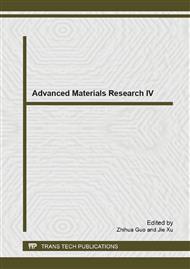[1]
Merchant, M.E., Mechanics of the metal cutting process. II. Plasticity conditions in orthogonal cutting. Journal of applied physics, 1945. 16(6): pp.318-324.
DOI: 10.1063/1.1707596
Google Scholar
[2]
Lee, E.H. and B.W. Shaffer, The theory of plasticity applied to a problem of machining. 1949: Division of Applied Mathematics, Brown.
Google Scholar
[3]
Oxley, P.L.B. and H.T. Young, The mechanics of machining: an analytical approach to assessing machinability. (1989).
Google Scholar
[4]
Toropov, A. and S. Ko, Prediction of shear angle for continuous orthogonal cutting using thermo-mechanical constants of work material and cutting conditions. Journal of materials processing technology, 2007. 182(1): pp.167-173.
DOI: 10.1016/j.jmatprotec.2006.07.027
Google Scholar
[5]
Astakhov, V.P., M. Osman and M.T. Hayajneh, Re-evaluation of the basic mechanics of orthogonal metal cutting: velocity diagram, virtual work equation and upper-bound theorem. International Journal of Machine Tools and Manufacture, 2001. 41(3): pp.393-418.
DOI: 10.1016/s0890-6955(00)00084-5
Google Scholar
[6]
Li, B., et al., Analytical prediction of cutting forces in orthogonal cutting using unequal division shear-zone model. The International Journal of Advanced Manufacturing Technology, 2011. 54(5-8): pp.431-443.
DOI: 10.1007/s00170-010-2940-8
Google Scholar
[7]
Moufki, A., et al., Thermomechanical modelling of oblique cutting and experimental validation. International Journal of Machine Tools and Manufacture, 2004. 44(9): pp.971-989.
DOI: 10.1016/j.ijmachtools.2004.01.018
Google Scholar
[8]
Dudzinski, D. and A. Molinari, A modelling of cutting for viscoplastic materials. International Journal of Mechanical Sciences, 1997. 39(4): pp.369-389.
DOI: 10.1016/s0020-7403(96)00043-4
Google Scholar


